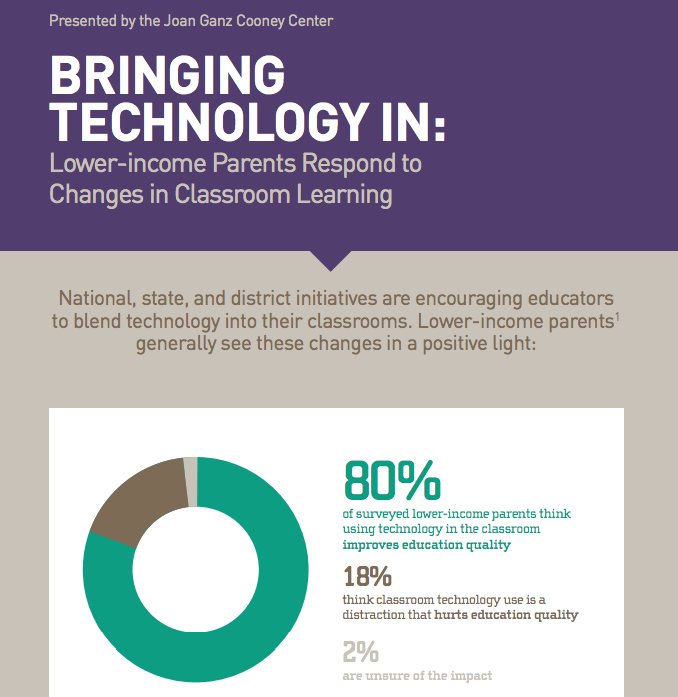For many years, the “digital divide” signaled a split between people with access to the internet and those without. The term expressed concerns about those who may fall behind in the highly digitized economy of the 21st century. But with internet service now present in most U.S. homes, the gap has become more nuanced. Today, the question is less about access and more about quality and consistency of connection.
A nationally representative telephone survey of 1,191 families conducted last year by Joan Ganz Cooney Center and Rutgers University revealed that 94% of lower-income parents with children ages 6 to 13 have some kind of internet connection at home. Unfortunately, however, about one in four (23%) families connects only through mobile devices. While increasingly powerful, smartphones and tablets have limited capabilities compared to computers connected to broadband connections.
The Cooney Center is proud to present a series of infographics that highlight the connectivity trends of lower-income families in the United States. “Under-connected in America: Digital Equity Challenges for Lower-Income Families,” illustrates obstacles to high-speed connection and the ways in which reduced internet access hinders learning for children and their parents.
In a world where high-quality internet connection is not a luxury but a utility, these survey findings help to contextualize digital equity in terms of quality, not just access. Join us as we share other lessons from our survey findings over the next few months. (View a Spanish-language version of this infographic here.)





